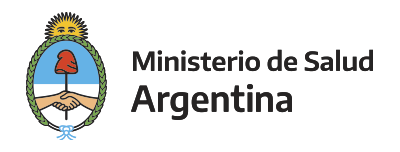Por favor, use este identificador para citar o enlazar este ítem:
http://sgc.anlis.gob.ar/handle/123456789/1315| Campo DC | Valor | Lengua/Idioma |
|---|---|---|
| dc.contributor.author | Suárez-Alvarez, Roberto | es |
| dc.contributor.author | Sahaza, Jorge H | es |
| dc.contributor.author | Berzunza-Cruz, Miriam | es |
| dc.contributor.author | Becker, Ingeborg | es |
| dc.contributor.author | Curiel-Quesada, Everardo | es |
| dc.contributor.author | Pérez-Torres, Armando | es |
| dc.contributor.author | Reyes-Montes, María del Rocío | es |
| dc.contributor.author | Taylor, Maria Lucia | es |
| dc.date.accessioned | 2019-11-20T20:25:23Z | - |
| dc.date.available | 2019-11-20T20:25:23Z | - |
| dc.date.issued | 2019-09 | - |
| dc.identifier.uri | http://sgc.anlis.gob.ar/handle/123456789/1315 | - |
| dc.description.abstract | This article describes, for the first time, the role of the nasal mucosa (NM) as the initial site for the Histoplasma capsulatum mycelial-to-yeast transition. The results highlight that yeasts may arrive to the cervical lymph nodes (CLN) via phagocytes. Bats and mice were intranasally infected with H. capsulatum mycelial propagules and they were killed 10, 20, and 40 minutes and 1, 2, and 3 hours after infection. The NM and the CLN were monitored for fungal presence. Yeasts compatible with H. capsulatum were detected within the NM and the CLN dendritic cells (DCs) 2-3 hours postinfection, using immunohistochemistry. Histoplasma capsulatum was re-isolated by culturing at 28°C from the CLN of both mammalian hosts 2-3 hours postinfection. Reverse transcription-polymerase chain reaction assays were designed to identify fungal dimorphism, using mycelial-specific (MS8) and yeast-specific (YPS3) gene expression. This strategy supported fast fungal dimorphism in vivo, which began in the NM 1 hour postinfection (a time point when MS8 and YPS3 genes were expressed) and it was completed at 3 hours (a time point when only the YPS3 transcripts were detected) in both bats and mice. The presence of intracellular yeasts in the nasal-associated lymphoid tissue (NALT), in the NM nonassociated with the NALT, and within the interdigitating DCs of the CLN suggests early fungal dissemination via the lymph vessels. | es |
| dc.language.iso | en | es |
| dc.relation.ispartof | The American journal of tropical medicine and hygiene | es |
| dc.title | Dimorphism and Dissemination of Histoplasma capsulatum in the Upper Respiratory Tract after Intranasal Infection of Bats and Mice with Mycelial Propagules | es |
| dc.type | Artículo | es |
| dc.identifier.doi | 10.4269/ajtmh.18-0788 | - |
| item.cerifentitytype | Publications | - |
| item.fulltext | No Fulltext | - |
| item.grantfulltext | none | - |
| item.languageiso639-1 | en | - |
| item.openairetype | Artículo | - |
| item.openairecristype | http://purl.org/coar/resource_type/c_18cf | - |
| Aparece en las colecciones: | Publicaciones INEI | |
Visualizaciones de página(s)
124
comprobado en 07-ene-2026
Google ScholarTM
Consultar
Altmetric
Altmetric
Los ítems de DSpace están protegidos por copyright, con todos los derechos reservados, a menos que se indique lo contrario.

